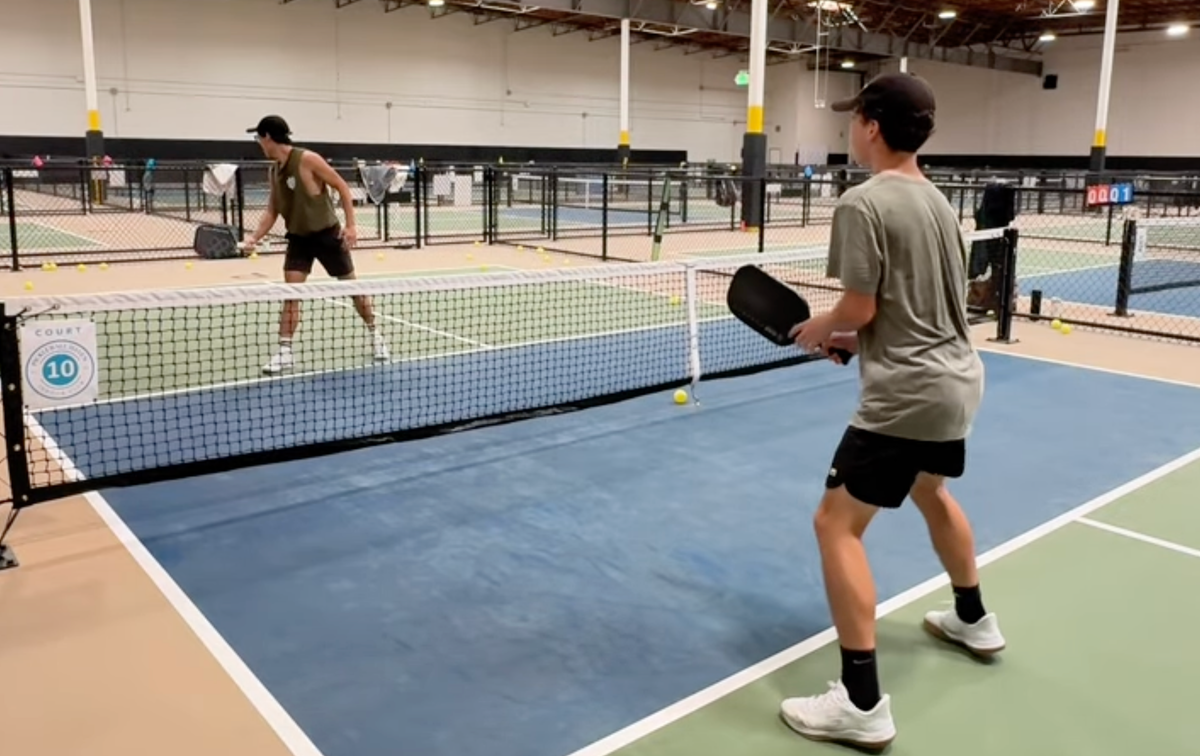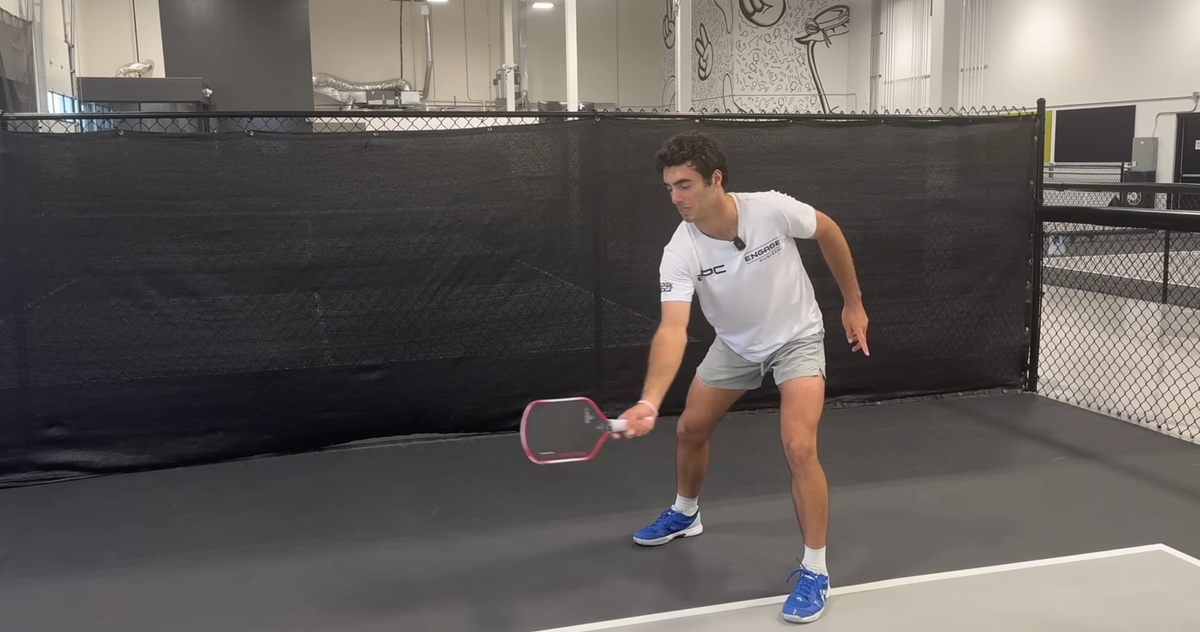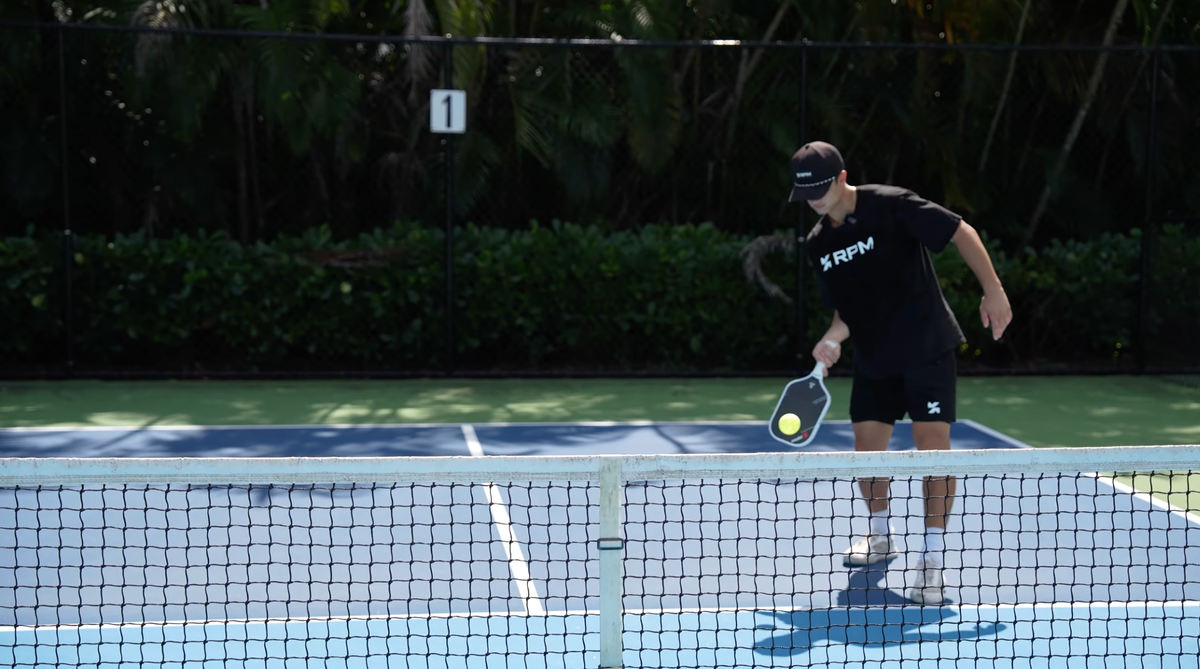
Hey guys, it’s John from John Cincola Pickleball. There are very few shots in pickleball that are more frustrating than watching a lob go up and over your head, especially when it happens multiple times in a match. If you want to learn the secrets of an offensive lob that’ll have your opponent scrambling all over the court, stick around.
Why the Kitchen Line Lob is So Effective
The kitchen line lob can be an incredibly successful play in pickleball, but there’s a lot to learn if you want to get it right. You need to know:
- When to hit the lob and when not to.
- The proper technique to execute it effectively.
- Five essential tips to skyrocket your success rate.
We’re going to cover all that and more in this guide, so let’s dive in!
The Most Common Lob Mistake
The most common mistake I see with kitchen line lobs is using them in the wrong situations. Here’s what happens:
You’re in a dinking rally, and someone hits a good shot. You’re scrambling, off balance, maybe backing up or reaching for the ball. In that moment of panic, you throw the ball up into the air, hoping the lob will get you out of trouble.
Why This Doesn’t Work:
- The margin for error is tiny. Getting the ball over your opponent’s head is hard.
- Keeping the lob in the court is even harder when you don’t have good balance or body control.
- Most likely, the lob goes too long, or it pops up short, leaving your opponent with an easy overhead smash.
What to Do Instead:
When you’re in trouble at the kitchen line, the best play is still a reset dink. Get out of the habit of thinking the lob is your “escape button.”
At the baseline, a lob can work to buy time or get out of trouble, but it’s not the right tool when you’re at the kitchen line.
WIN THE PADDLE OF YOUR DREAMS!
Sign up now for a chance to win any paddle of your choice currently in stock at JustPaddles. Plus, receive expert tips from pro players and exclusive content delivered straight to your inbox.

How to Execute the Lob
The lob is actually a lot simpler than most people think, and the technique is almost identical to a neutral dink:
- Open Paddle Face:
When you dink, especially a neutral dink, you use an open paddle face. The ball’s trajectory in a dink is almost like a mini lob (figure 1). - Adding Acceleration:
For the lob, keep the same open paddle face but add more acceleration. This gives the ball the height to go over your opponent’s head. - Power Regulation:
The hardest part of lobbing is controlling power. Too little power, and the lob doesn’t clear your opponent. Too much, and it goes out of bounds. It takes practice to find that perfect balance.

Five Keys to a Successful Lob
Mindset and Decision-Making:
Think of the lob like an attack. Use it in similar situations where you’d go for an offensive shot. If you wouldn’t attack off balance or from a bad position, don’t try to lob from those spots either.
Position Matters:
The closer you are to the net, the better your lob will be. The farther back you are, the lower the apex of the lob, making it easier for your opponent to hit an overhead.
Don’t Go Too High:
A common misconception is that a lob needs to be sky-high. In reality, you only need to clear your opponent by about 2 feet. A lower lob comes down faster, giving them less time to react.
Target the Backhand:
If you mess up and leave the lob short, it’s less dangerous if your opponent is hitting it on their backhand side. Avoid lobbing over their forehand unless you’re confident it’ll land perfectly, or there is a lot of sunshine like in this video of Leigh Waters 😉
Situational Awareness:
- Wind: Lobbing into the wind works because it helps keep the ball in play. Lobbing with the wind at your back? Not so much.
- Opponent Skills: Consider their height, speed, and overhead ability. Taller or more athletic players can handle lobs better, while those who play close to the kitchen line are easier to lob.
Practice Makes Perfect
This shot takes practice. Spend time on the court learning to regulate your power and refine your technique. A good starting drill? Have a partner stand in front of you with their paddle extended as high as they can. Practice lobbing just 2 feet above their paddle tip to develop control.
Final Thoughts
Now, take these tips to the court and start practicing! Remember to grab a screenshot of these key points so you’ve got them handy next time you play. Good luck, and I’ll see you in the next article!
For exclusive content and full-version tutorials, make sure to check out my YouTube channel, ➡️ John Cincola Pickleball.
Anuncie Aqui / Advertise Here
Sua marca para o mundo Pickleball! / Your brand for the Pickleball world!

 English
English  Spanish
Spanish  Portuguese
Portuguese  German
German  Italian
Italian  Japanese
Japanese  French
French  Polish
Polish  Russian
Russian  Netherlands
Netherlands  Hungarian
Hungarian  Turkish
Turkish  Videos
Videos  Pickleball Portal
Pickleball Portal








 English (US) ·
English (US) ·  Portuguese (BR) ·
Portuguese (BR) ·